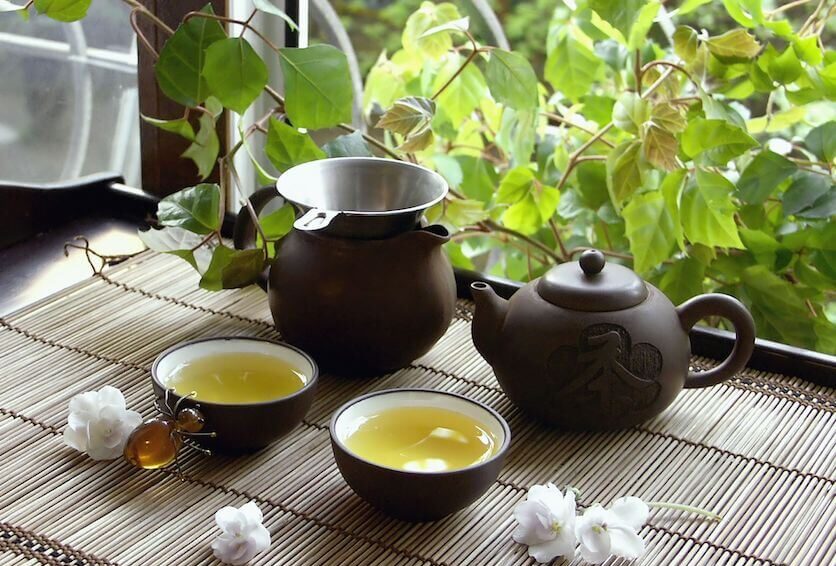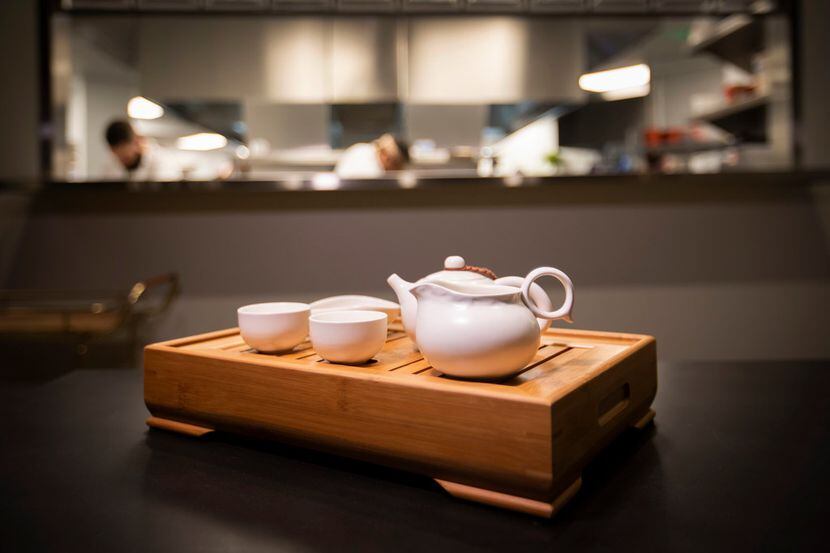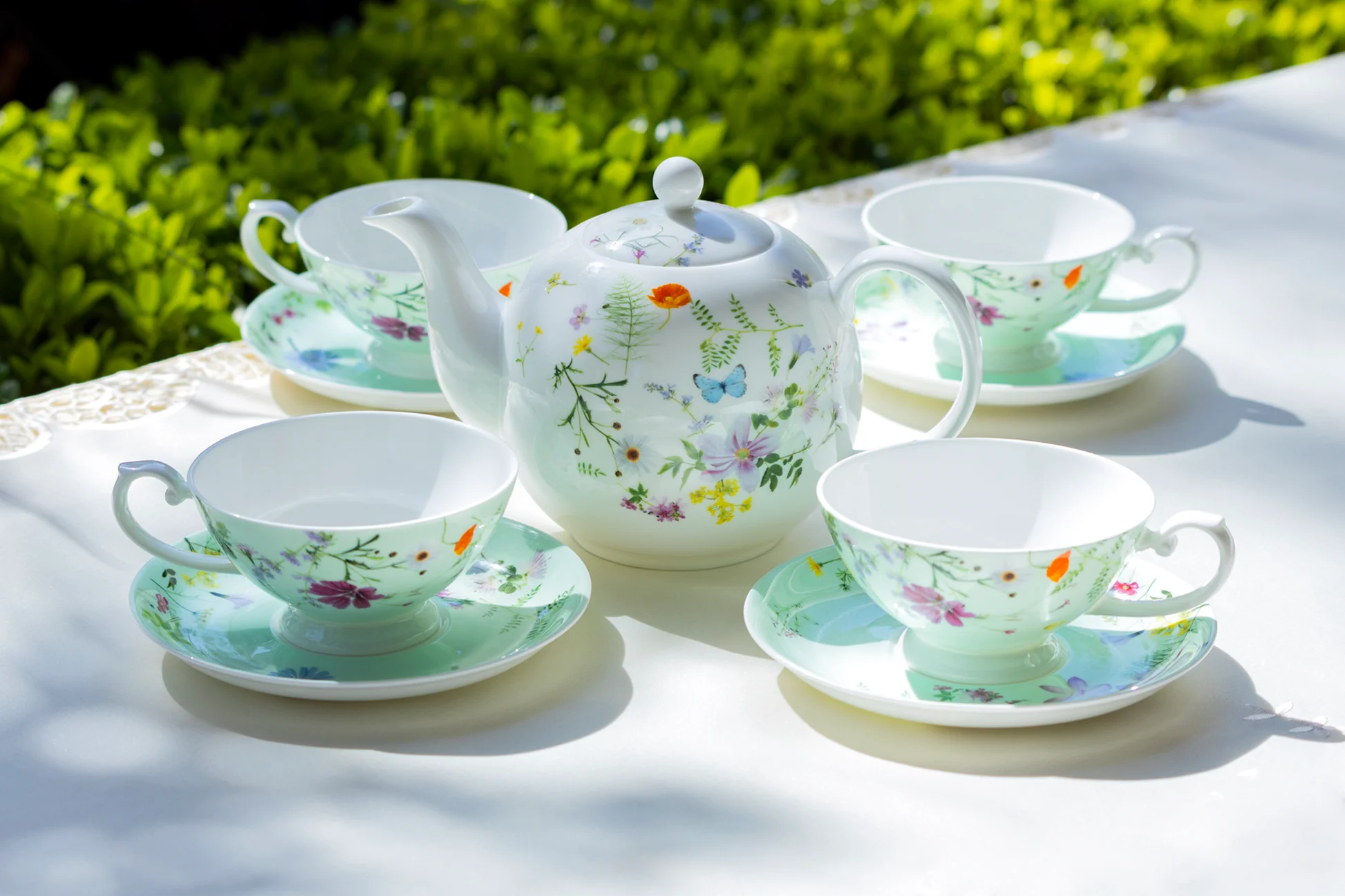The elegant rituals of a traditional Chinese tea service reflect centuries of cultural refinement. As you prepare to experience this singular tradition firsthand, contemplate the nuances that distinguish Chinese tea culture from the Japanese and other East Asian traditions. From the meticulous selection of fresh leaves to the graceful pouring of tea into tiny cups, every movement exudes purpose and meaning. This experience immerses you in soothing aromas and flavors while connecting you to generations past. Before your journey into the ceremonial world of Chinese tea begins, take a moment to center your mind and ready your senses. An unforgettable experience awaits you.
An Introduction to Chinese Tea Traditions

Chinese tea culture dates back thousands of years. Tea drinking originated during the Shang Dynasty and became deeply ingrained in Chinese society and customs. The tea traditions and rituals seen today reflect centuries of cultural meaning and refinement.
The Chinese tea ceremony, also called Gongfu or Kung Fu tea, focuses on preparing and appreciating the tea itself. It involves multiple infusions of tea leaves to gently extract optimal flavor. Special small Yixing teapots are used.
Chinese teas can be classified into main categories – white, green, oolong, black, and pu-erh. Each has unique processing methods that yield different flavors. Common teas include Longjing, Tieguanyin, and Da Hong Pao.
Tea is always served with great care and etiquette in China. The tea server pours each serving gracefully, holding the teapot high above the cups. The drinker thanks the server by tapping two fingers on the table after receiving the tea.
Tea drinking often signifies hospitality, respect, and thoughtfulness in social situations. Hosts take great care to select fine teas to honor their guests.
The Chinese tea set is as refined as the brewing methods, with delicate teacups, a sharing pot, aroma cup, and more. Chinese-style teaware is designed to enhance the tea experience.
Steeped in history and infused with tradition, the Chinese tea service is an art form that reflects cultural values of patience, tranquility, and social harmony. Learning proper techniques allows deeper appreciation of this historic beverage.
Key Differences Between Chinese and Japanese Tea Ceremonies
While both Chinese and Japanese tea ceremonies center around the preparation and presentation of tea, there are some notable differences:
Focus – The Chinese tea ceremony focuses more on the tea itself – the leaves, the water, the vessels and the brewing process. The Japanese tea ceremony places more emphasis on mindfulness, harmony and etiquette.
Setting – Chinese tea ceremonies often take place in tearooms or gardens with an informal setting. Japanese ceremonies follow strict protocols in a tea house with designated spaces.
Tea type – Chinese ceremonies highlight various types of tea like green, black, oolong and pu-erh. Japanese ceremonies exclusively use powdered green tea (matcha).
Food – Light refreshments are commonly served in Chinese tea ceremonies. Japanese ceremonies do not include food or snacks.
Sequence – The Chinese process involves multiple infusions from the same leaves. The Japanese process uses one bowl of tea per guest.
Utensils – Chinese tea sets include items like a tea pot, cups, tray and more. The Japanese set is sparse – just a tea bowl, whisk and cloth.
Guests – Chinese ceremonies can have many guests while Japanese ceremonies often have a maximum of 5.
Both beautiful ceremonies in their own right, the Chinese and Japanese rituals offer unique cultural experiences for tea lovers to appreciate and enjoy. With an open mind, one can find meaning in these time-honored traditions.
The Process of Making Chinese Tea, From Leaf to Cup

The intricate process of preparing and serving Chinese tea reflects centuries of tradition. Many factors contribute to producing the perfect cup of tea.
Harvesting – Tea leaves are picked by hand when ready for harvest. Timing is critical, as leaves plucked too early or late will produce inferior tea.
Withering – Fresh tea leaves are spread out and allowed to wilt or wither. This removes excess moisture and prepares the leaves for further processing.
Fixing – Also called “kill green,” this halts oxidation by heating or steaming the withered leaves. This preserves the leaves’ green color.
Rolling – The leaves are rolled and shaped either by hand or machine. This breaks down the leaf structure, releasing oils and enzymes.
Oxidation – For black and oolong teas, the leaves undergo controlled oxidation, allowing them to slowly turn darker. This develops more complex flavors.
Drying – The final step stops the oxidation process and reduces moisture content. Leaves may be air-dried or pan-fired in woks.
Sorting and Grading – The finished leaves are sorted into grades based on size, shape and quality. Higher grades produce finer quality tea.
When brewing, factors like water quality, temperature, brewing vessel and steeping time all affect the resulting flavor and aroma. Following traditional methods handed down over generations results in a refined and ritualistic tea experience.
What to Expect From Tea Service at Chinese Restaurants
When dining at an authentic Chinese restaurant, you may have the opportunity to participate in a traditional Chinese tea service. This ritualistic presentation of tea offers insight into centuries-old customs.
The tea is typically served in small ceramic cups without handles. These allow the tea to be cradled in the palm of the hand to warm the cup before sipping.
Oolong or pu-erh teas are common offerings. They are made from partially oxidized or fermented leaves. The flavors are complex, ranging from floral to earthy.
The tea is made in several successive short steeps, with the server replenishing the cups repeatedly. This allows the flavors to unfold over multiple infusions.
Tea is seen as a cleansing tonic that aids digestion. It is often served before, during, or after the meal.

There are intricate traditions around accepting the cups, including tapping them on the table before drinking as a gesture of thanks.
The way the tea is poured and presented is an art form, like a dance between server and guest. Grace and fluidity of movement are prized.
Tea service represents hospitality and is treated with great ceremony. Patience and appreciation for the traditions show respect.
Some restaurants may allow you to purchase the leaves after the service so you can take some home to enjoy later.
This elegant custom allows us to slow down and mindfully focus on the aromas, flavors and community of the tea drinking experience. Surrendering to its unhurried pace lets you become fully present in the moment.
Finding Authentic Chinese Tea Sets and Accessories
When selecting a Chinese tea set, opt for authentic pieces to appreciate the artistry and tradition behind this ritual. Follow these tips to find quality teaware:
Visit specialty Chinese markets in your area. Large Asian supermarkets often have entire aisles dedicated to tea paraphernalia. Shop around to compare styles and prices.
Check museum gift shops. Reputable museums with Asian art collections will carry properly glazed Yixing teapots and decorated porcelain teacups.
Look for reputable dealers online. Search for vendors specializing in Chinese tea culture. Read reviews and product descriptions carefully when buying sight unseen.
Consider handmade and antique finds. Tea equipment passed down through generations or shaped by artisans makes each piece unique. Attend antique shows or online auctions to uncover treasures.
Select practical accessories. Along with teapots and cups, collect tea trays, pitcher sets, strainers, and stirring utensils suited for gongfu style brewing.
Invest in quality. Well-crafted items made from clay, porcelain, glass or wood will withstand repeated steepings. Durability and craftsmanship justify higher prices for cherished pieces.
Take time to research, compare, and evaluate options when compiling your Chinese tea set. Curate each item to reflect your personal taste and appreciation of Chinese tea culture spanning dynasties. The ritual of preparing and serving tea will be enriched with an authentic, artful collection. Explore the exquisite offerings available at teasetbox.com to discover finely crafted teapots, cups, and accessories that seamlessly blend tradition with modern aesthetics.
Conclusion
As you have learned, the Chinese tea service is rich in tradition, ritual, and meaning. From the cultivation and processing of tea leaves to intricate ceremonies honoring tea’s place in Chinese culture, every element has significance. Understanding and thoughtfully participating in a Chinese tea service allows one to connect with centuries of history and heritage. Seek out opportunities to experience an authentic tea service firsthand and deepen your appreciation of this refined art. Whether in China itself or at a specialized tea house closer to home, observing and learning the customs around tea will prove fascinating and rewarding. With an open and curious mind, you can gain insight into a ceremony that is both ancient and alive, a treasured tradition passed down through generations.
Elevate your knowledge game with the latest Dash. Keep the dash of innovation alive! Thanks for being a trendsetter.




